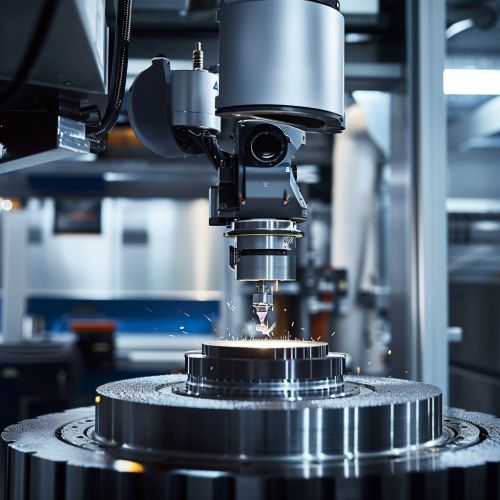Cylindrical Robot
Introduction
A cylindrical robot is a type of industrial robot with a cylindrical coordinate system. This type of robot is characterized by its ability to rotate around a vertical axis while moving linearly along two perpendicular axes. The cylindrical robot is one of the most common types of industrial robots, used in a variety of applications such as assembly, handling, and welding.


Design and Structure
The design of a cylindrical robot is based on a cylindrical coordinate system. This system is defined by three parameters: the radial distance, the azimuthal angle, and the z-coordinate. The robot's arm can move in a cylindrical shape, hence the name. The arm of the robot is typically attached to a rotating base, allowing it to rotate around a vertical axis. This rotation, combined with the ability to move linearly along two perpendicular axes, gives the robot a wide range of motion.
The structure of a cylindrical robot typically includes a base, a vertical column, a radial arm, and a wrist. The base provides stability and is often fixed to the ground or a workbench. The vertical column, attached to the base, allows for vertical movement. The radial arm, attached to the column, allows for radial movement. Finally, the wrist, attached to the arm, allows for rotational movement.
Working Principle
The working principle of a cylindrical robot is based on the cylindrical coordinate system. The robot's movements are controlled by a robot controller, which translates commands into movements along the three axes of the cylindrical coordinate system. The controller uses feedback from sensors to adjust the robot's movements and ensure accuracy.
The robot's movements along the vertical and radial axes are typically achieved through the use of linear actuators, such as hydraulic or pneumatic cylinders, or electric motors. The rotation around the vertical axis is typically achieved through the use of a rotary actuator, such as a servo motor.
Applications
Cylindrical robots are used in a wide range of applications, thanks to their versatility and range of motion. Some of the most common applications include:
- Assembly line work: Cylindrical robots are often used in assembly lines, where they can perform tasks such as picking and placing components, screwing or unscrewing parts, and inserting or removing pins.
- Material handling: Cylindrical robots are also used for material handling tasks, such as loading and unloading machines, palletizing and depalletizing, and transferring parts from one location to another.
- Welding: Cylindrical robots are commonly used for welding tasks, where they can perform precise and consistent welds, improving quality and productivity.
- Machine tending: Cylindrical robots can be used to feed parts into machines and retrieve them once the machining process is complete.
Advantages and Disadvantages
Like all types of robots, cylindrical robots have their advantages and disadvantages.
Advantages of cylindrical robots include:
- Wide range of motion: Thanks to their design, cylindrical robots can reach a large workspace with a relatively small footprint.
- Versatility: Cylindrical robots can perform a wide range of tasks, making them suitable for a variety of applications.
- Simplicity: The design and control of cylindrical robots are relatively simple, making them easier to program and maintain than some other types of robots.
Disadvantages of cylindrical robots include:
- Limited precision: While cylindrical robots can perform tasks with a high degree of accuracy, they are not as precise as some other types of robots, such as Cartesian or SCARA robots.
- Limited speed: Cylindrical robots are not as fast as some other types of robots, which can limit their productivity in high-speed applications.
